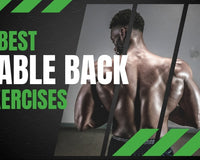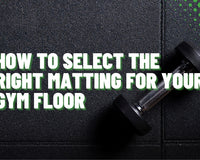What are the different types of resistance used in rowing machines?
Rowing machines have gained immense popularity as an effective workout tool that provides a full-body workout while being low impact.
These machines are a versatile choice for cardiovascular exercise, strength training, and overall fitness.
One crucial aspect to consider when choosing the best rowing machine for your needs is its resistance type. The type of resistance will determine the feel, intensity, and overall experience of the workout.
We will help you explore the various resistance types available on the market today, their features, benefits, and drawbacks.
There are four primary types of resistance commonly found in rowing machines:
- Air Resistance
- Magnetic Resistance
- Hydraulic Resistance
- Water Resistance
Air Resistance

Air resistance is one of the most common types of resistance which utilises a flywheel with fan blades, which generates resistance as the user pulls the handle and spins the flywheel against the flow of air.
The harder and faster the user rows, the more air the fan blades encounter, resulting in increased resistance and a challenging, dynamic workout experience.
This creates a dynamic and realistic rowing experience.
Related: See our recommended rowing machine workouts to get started.
| PROS | CONS |
|
|
|
|
|
|
|
|
|
Magnetic Resistance

In a magnetic rowing machine, magnets are used to generate resistance. The rowing machine's flywheel contains strong magnets, and as the user pulls the handle, the magnets create a magnetic field that opposes the motion. The closer the magnets are to the flywheel, the stronger the resistance becomes.
By adjusting the distance between the magnets and the flywheel, users can control the level of resistance, offering a smooth and controlled workout experience.
The main benefit of magnetic rowing machines is the level of noise they produce as they are almost silent to use. This makes them a much better choice over air rowers if you don't want to disturb your entire household or neighbours.
| PROS | CONS |
|
|
|
|
|
|
|
|
|
Hydraulic Resistance

In a piston rowing machine or sometimes called hydraulic rowing machines, hydraulic pistons are employed to generate resistance.
As the user pulls the handle, the pistons filled with fluid or air are compressed, creating resistance against the rowing motion.
By adjusting the hydraulic resistance level using a dial or lever, users can tailor the intensity of their workout.
Although it may have a limited range of motion, this type of rowing machine offers a compact and cost-effective option for users with limited space or budget.
Related: What muscles are worked by a rowing machine?
| PROS | CONS |
|
|
|
|
|
|
|
|
|
Water Resistance

Water resistance rowing machines simulate the experience of rowing on actual water.
Water resistance machines operate in a similar way to air resistance but uses a tank full of water instead of moving air.
These machines feature a tank filled with water and paddles attached to a flywheel.
As the user pulls the handle, the paddles spin in the water, creating resistance.
The level of resistance varies based on the rowing speed and intensity, providing a realistic and fluid rowing experience.
An added bonus of water resistance is the soothing sound the water adds to the overall ambiance, making it an appealing choice for users seeking a natural rowing feel.
As we saw with the air resitance type, the resistance level depends on the rowing speed and intensity.
| PROS | CONS |
|
|
|
|
|
|
|
|
|
How to Choose The Right Restistance Type?
When choosing a rowing machine, considering the resistance type is crucial to ensure an optimal workout experience. Each resistance type offers unique features, benefits, and considerations.
Air rowing machines provide a dynamic and challenging workout, while magnetic rowers offer a smooth and controlled experience. Hydraulic rowers are a budget-friendly option suitable for limited spaces, and water rowing machines tend to cost the most but offer arguably the most enjoyable and realistic rowing experience.
Assess your fitness goals, available space, budget, and personal preferences to determine the ideal rowing machine resistance type that suits your needs.
Regardless of the choice, incorporating rowing into your fitness routine is a fantastic way to improve cardiovascular health, strengthen muscles, and achieve overall fitness.
Related: Push your fitness level with Rowing Benchmark Testing Workouts.





